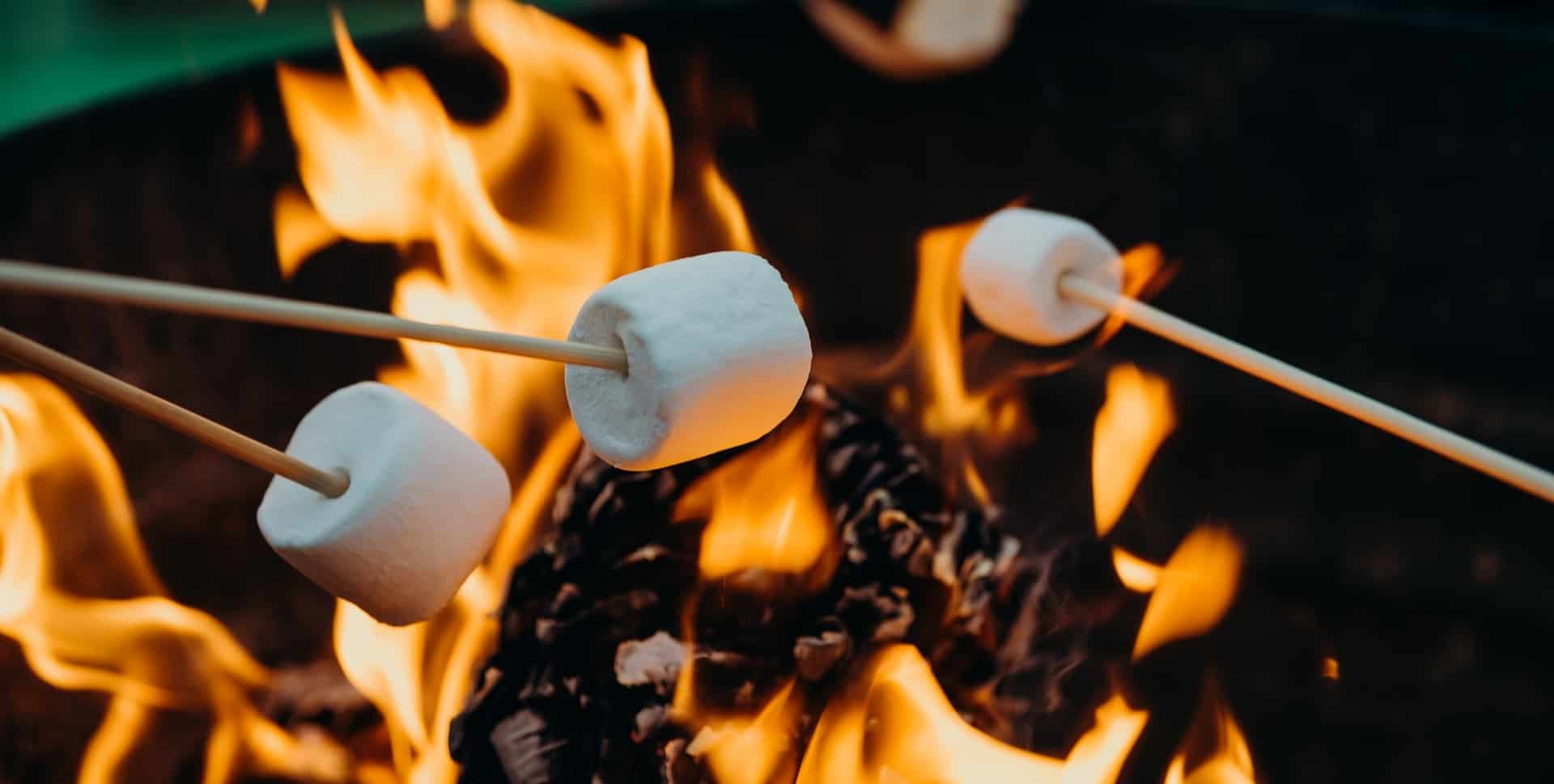For the inexperienced camping cook, sorting out the camping food list can be quite daunting. But really, the secret is in the planning. Plan each meal well before you leave, create an ingredient list from it, and Voila, you have your camping food checklist sorted!
The easiest foods to take on a camping trip have a long shelf life, are sturdy travelers, filling, and nutritious. Many simple meals fit this bill, and even the most inexperienced camper will be able to create delicious camp meals that will keep everyone happy!
Have a look through our camping pantry list and see if the ingredients are there for your favorite meals, or check out our camping meal suggestions and create your ingredient list from there. Either way will work as long as you plan your menu and then grocery shop for it.
Start simple with your camping food list and as you gain confidence and proficiency, start to branch out and dabble in more adventurous meals on your family car camping weekends away! Bon appetit!
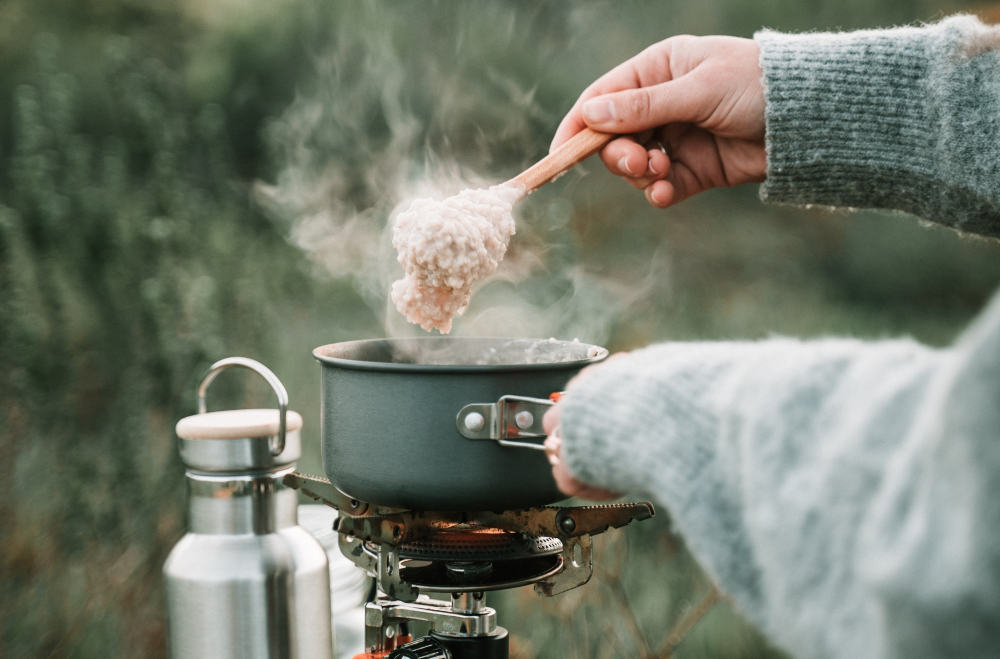
Related: Looking to eat outdoors but hate the bugs? Use a screen tent with mesh walls! Check out our reviews of the best screen tent for camping.
Dry Foods
-
Cereals
-
Bread: loaf, rolls, English muffins, buns
-
Pasta
-
Noodles
-
Rice
-
Couscous
-
Powdered milk
-
Crackers and biscuits
-
Eggs
-
Sugar
-
Flour
-
Pancake mix
-
Powdered soup mix
-
Graham Crackers
-
Nuts
-
Instant potato mix
-
Instant pudding mix
- Add new
Dairy: Needs to be in the cooler
-
Fresh milk
-
Butter
-
Cheese
-
Yogurt
- Add new
Meat: Needs to be kept in the cooler
-
Hot dogs
-
Precooked and frozen sausages
-
Bacon
-
Burgers
-
Meats to pan fry or grill on the fire (Chicken, beef, pork)
- Add new
Fresh fruit and vegetables
-
Apples, oranges, melon, grapes, seasonal fruits
-
Vegetables: Carrots, potatoes, root veggies, corn on the cob, peppers
-
Salad Items: Lettuce, spinach, cucumbers, tomatoes, radishes
- Add new
Tinned food
-
Beans
-
Soups
-
Stews
-
Fish: tuna, salmon, sardines
-
Vegetables: peas, corn, carrots, tomatoes
-
Fruit: apples, pear, pineapple, prunes
- Add new
Jars
-
Sauces: Pasta, Chili, curry, pesto
-
Toppings: Peanut butter, jam
-
Condiments: Ketchup, mustard, and relish
-
Cooking oil: olive, vegetable, lard
- Add new
Drinks
-
Tea, coffee, hot choc, herbal teas
-
Longlife juice
-
Ice tea crystals
-
Cordial
-
Water
-
Soda Pop
-
Beer, wine
- Add new
Herbs & Spices
-
Salt and pepper
-
Seasoning salt
-
Premixed seasonings (Greek, Italian, Cajun)
-
Cinnamon/sugar
-
Garlic cloves or powder
- Add new
Snacks
-
Popcorn
-
Trail Mix
-
Dried fruit
-
Crackers and cheese
-
Chips and salsa
-
Granola bars
-
Cookies
-
Chocolate
- Add new
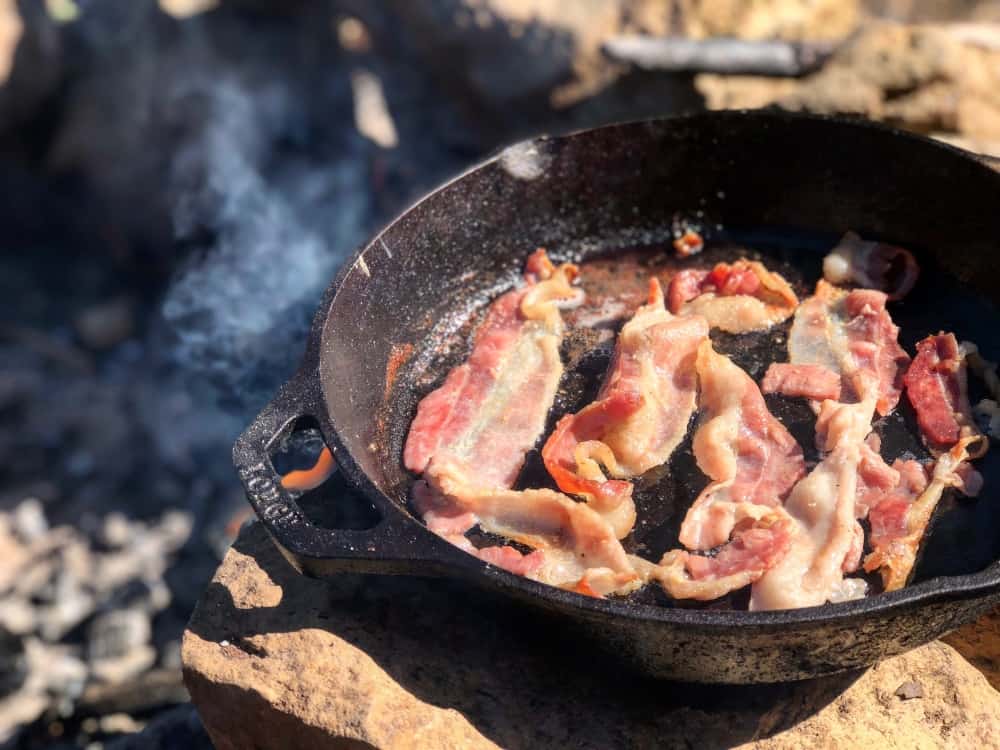
Breakfast meal ideas
-
Bacon and egg muffins
-
Granola
-
Oatmeal and raisins
-
Pancakes and maple syrup
-
French Toast
-
Bacon and eggs
-
Hash browns
-
Scrambled eggs on toast
-
Cereal, fruit, and milk
-
Grits
- Add new
Lunch meal ideas
-
Wraps and sandwiches or anything bread-based
-
Pasta or noodle salad
-
Mug soups
-
Salad: lentil, barley, pasta, potato, bean, taco
- Add new
Dinner meal ideas
-
Foil packets on the fire (potato, root vegetables, sausage and potato)
-
One dish dinners (meat and veggies with a cheese or tomato sauce base)
-
Hot dogs
-
Pasta and sauce
-
Rice, veggies, cubed meat and curry sauce
-
Coconut chicken curry
-
Macaroni with tuna and veggies
-
Baked beans
-
Fish baked in foil with lemon slices
-
Layered bacon, potato and cheese in a dutch oven
-
Hamburgers
-
Pie iron sandwiches
-
Kebab skewers (meat and vegetable cubes)
- Add new
Dessert ideas
-
S’mores!
-
Banana boats
-
Campfire cones
-
chestnuts
- Add new
A banana boat is a banana in its skin, stuffed with chocolate and marshmallow, wrapped in foil, baked in the fire. A campfire cone is waffle cones stuffed with strawberries, banana, marshmallow, chocolate pieces, wrapped in foils and slowly cooked on the grate.
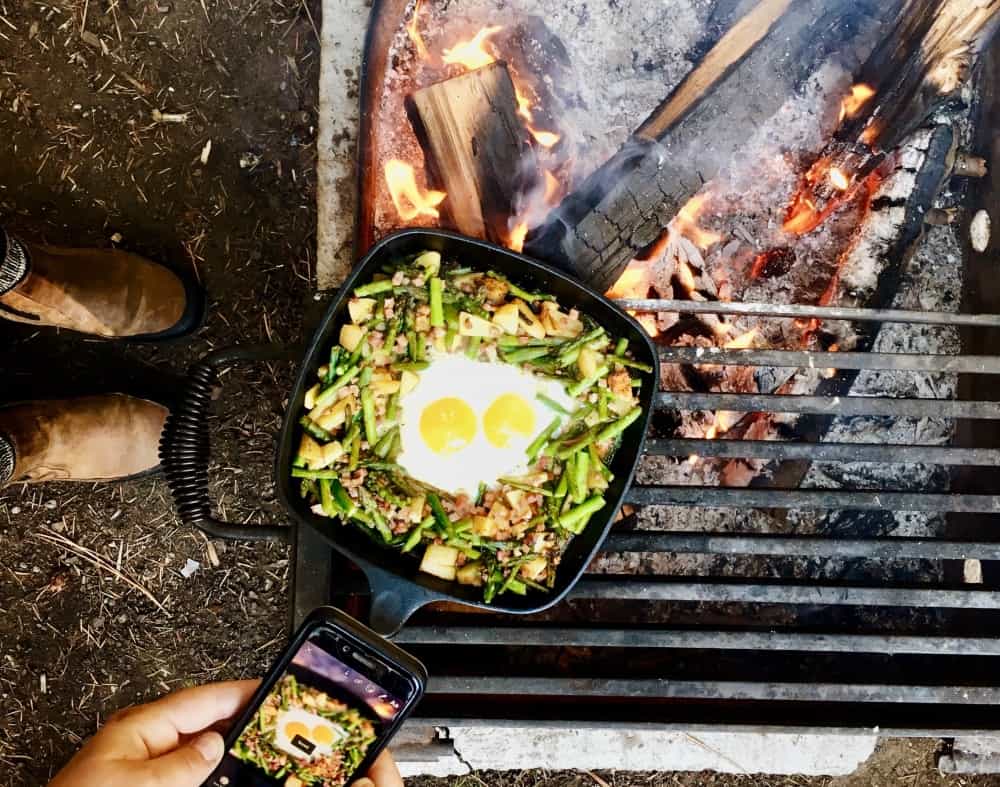
Hacks for selecting, storing, and preparing camp food
Planning
- Menu plan, plan your menu, and write a detailed list of what you will have for each meal and snacks on each day. This list forms the basis of all the foods you will pack.
- Bring as much food as you can that doesn’t require refrigeration.
- Keep a list in your camping box of meals that worked well for you (and meals that didn’t) for your next trip.
- Use the list. And check off each item as you pack it. You would hate to forget the sugar. Or the coffee!
- Bring more food than you think you will need. People eat more when they are camping.
Preparation
- Make the first night’s meal a cold one or one you have prepared earlier just in case setting up takes longer than you thought.
- Also, pre-prepare a meal for your first night at home and leave it in the fridge or freezer. You are unlikely to want to cook and unpack at the same time!
- Freeze your meat before you leave. It helps keep everything else cool too.
- Freeze homemade soups and stews to take with you to cut down on preparation at the campground.
- Try to use leftovers at the next meal.
- Freeze and double bag fresh meats and place them on the bottom of the cooler, so any juice that escapes doesn’t contaminate the rest of your food.
Remember, the secret is in the preparation and planning! Decide on each meal you want to eat each day (including the day you leave and the day you come back) and create an ingredient and equipment list from that list of meals.
Then all you have to do is grocery shop for those items, prepare, freeze, and pack them all, and you’ll be off in no time, creating fantastic camping meals for your family, friends, or partner. They’ll be impressed, and you’ll see how easy it can be. Win-win for everyone!
Bon Appetit! Happy Camping 😊
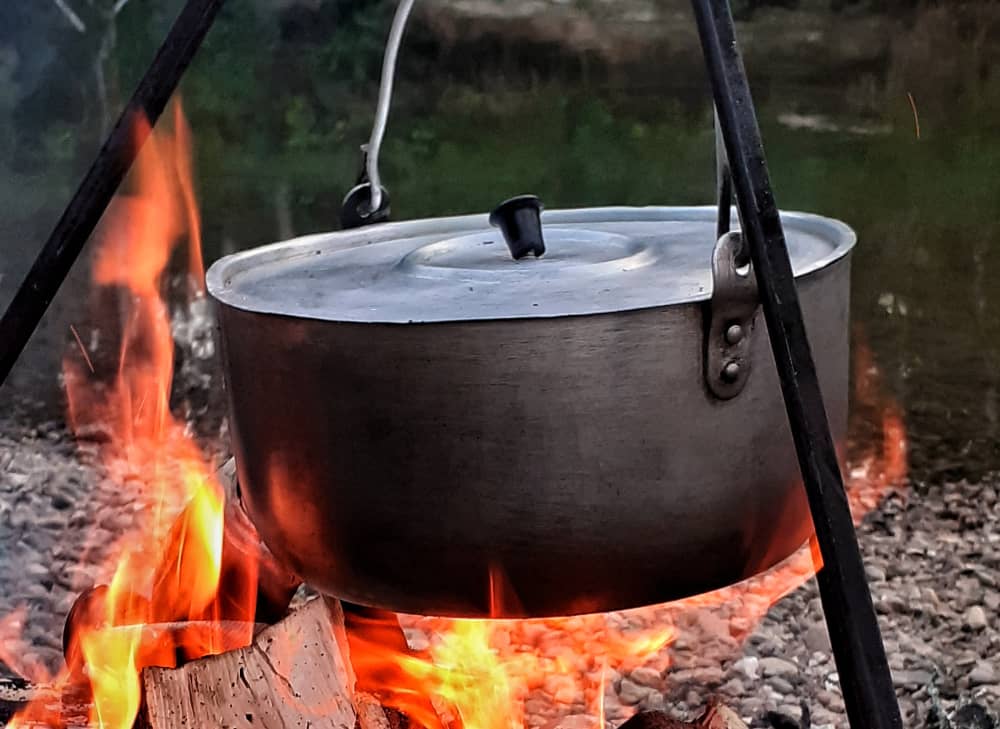
Back one: Want to take your camping culinary skills up a notch? Try putting together a camp kitchen! Find out what to bring in our camp kitchen packing list.
Next up: Make sure to look after your food when you’re camping – or risk food poisoning! Find out how to keep your food cold when you’re camping.
